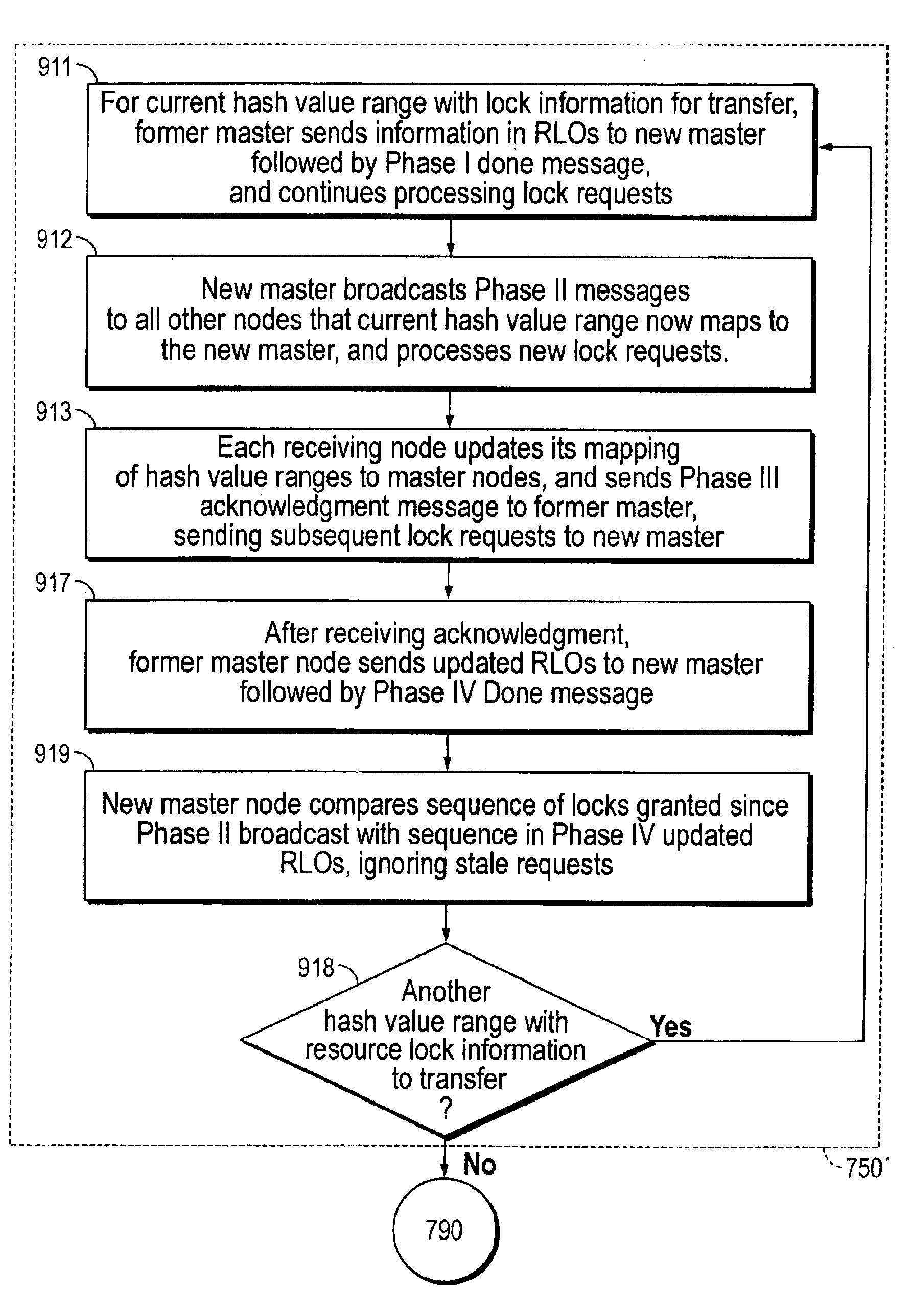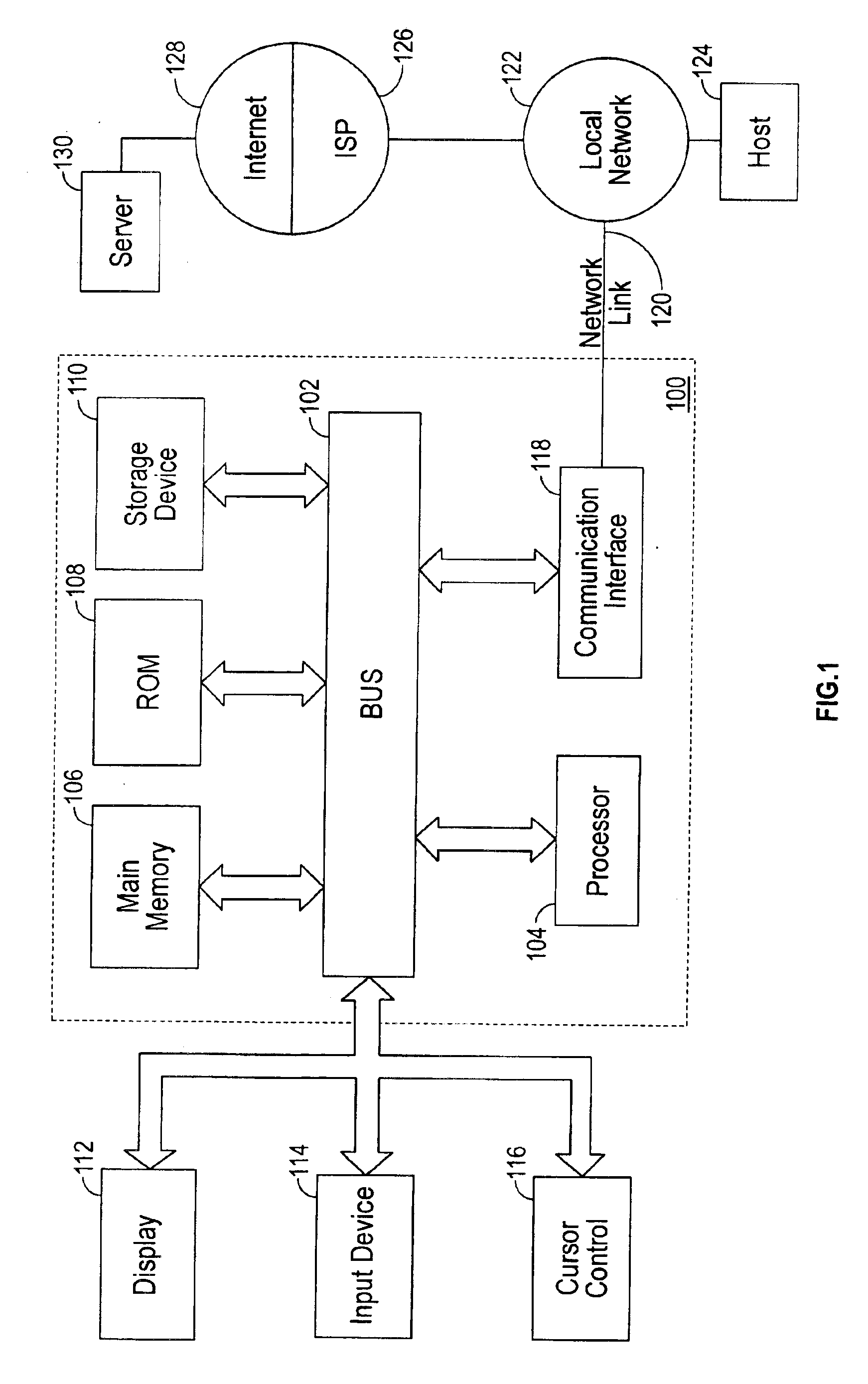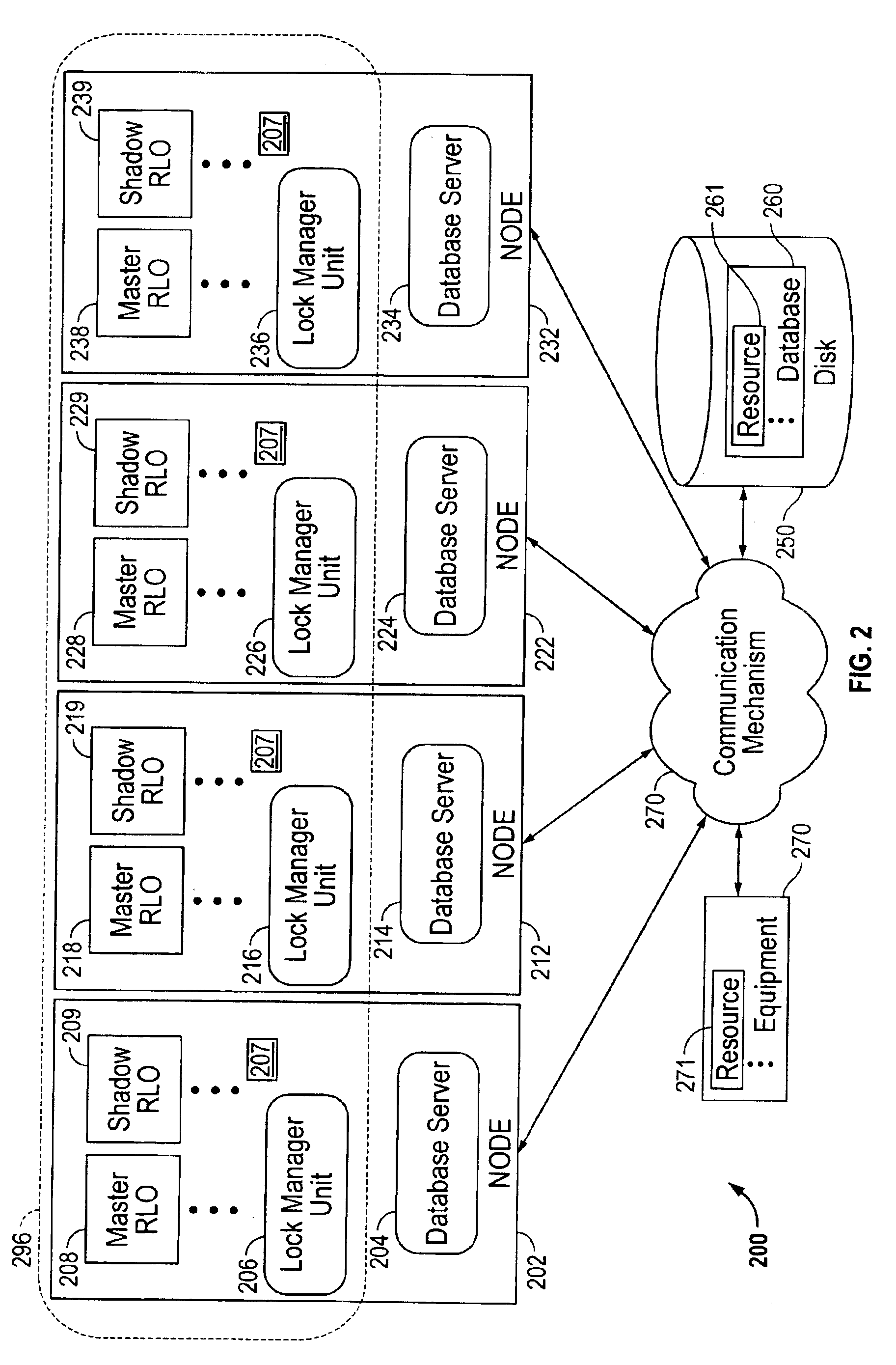Techniques for DLM optimization with transferring lock information
a technology of lock information and dlm optimization, applied in the field of dlm optimization with transferring lock information, can solve the problems of inability to access many resources in certain ways, inability to improve the performance of distributed lock manager (dlm), and inability to achieve certain actions. the effect of reducing the time required for reconfiguration
- Summary
- Abstract
- Description
- Claims
- Application Information
AI Technical Summary
Benefits of technology
Problems solved by technology
Method used
Image
Examples
Embodiment Construction
[0049]Techniques for DLM optimization and faster reconfiguration are described. In the following description, for the purposes of explanation, numerous specific details are set forth in order to provide a thorough understanding of the present invention. It will be apparent, however, to one skilled in the art that the present invention may be practiced without these specific details. In other instances, well-known structures and devices are shown in block diagram form in order to avoid unnecessarily obscuring the present invention.
Functional Overview
[0050]Certain techniques described below are directed to flexibly re-mastering without freezing lock operations. This improves performance of a DLM by avoiding the suspension of all lock operations during re-mastering.
[0051]Other techniques allow re-mastering without performing the other functions of reconfiguration. This speeds subsequent reconfiguration, on average, by anticipating some of the message traffic that would be needed during...
PUM
 Login to View More
Login to View More Abstract
Description
Claims
Application Information
 Login to View More
Login to View More - R&D
- Intellectual Property
- Life Sciences
- Materials
- Tech Scout
- Unparalleled Data Quality
- Higher Quality Content
- 60% Fewer Hallucinations
Browse by: Latest US Patents, China's latest patents, Technical Efficacy Thesaurus, Application Domain, Technology Topic, Popular Technical Reports.
© 2025 PatSnap. All rights reserved.Legal|Privacy policy|Modern Slavery Act Transparency Statement|Sitemap|About US| Contact US: help@patsnap.com



